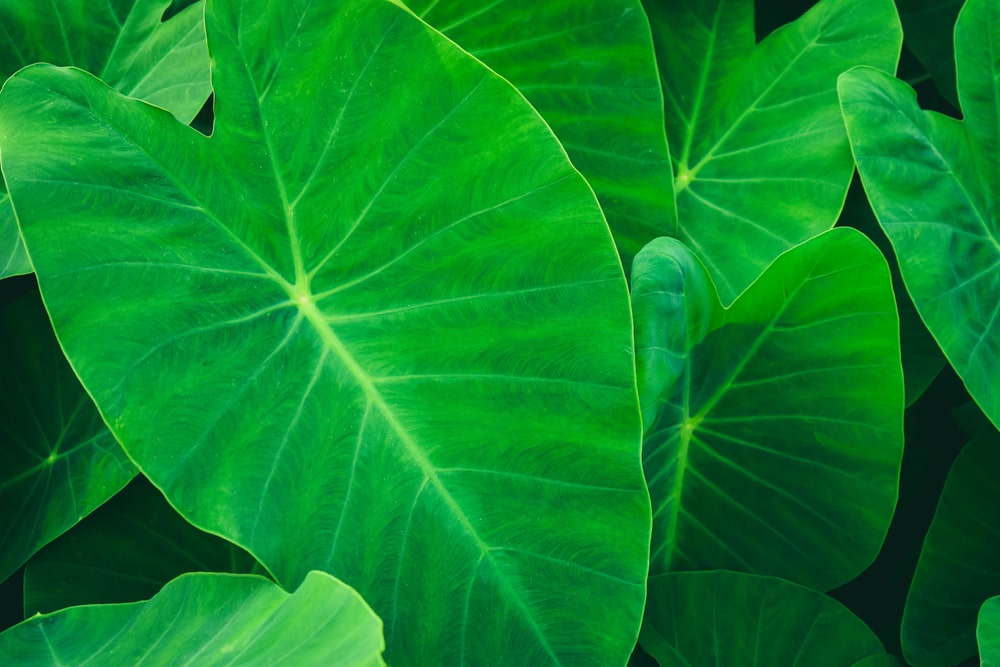Elephant ears have been cultivated for more than 10,000 years as a food crop—making it one of the oldest cultivated plants in the world. The botanical name is Colocasia esculenta—esculenta comes from the Latin word for edible. It’s toxic when raw due to calcium oxalate crystals but edible when cooked.
In Polynesia, elephant ears are called Taro, and an edible dish called poi is made from its mashed roots. Most traditional Hawaiian luaus will have poi.
Elephant Ears Provide Lush Tropical Interest in Your Yard
On the other hand, I’m less interested in eating mine and more interested in how these provide lush tropical interest in my yard.
Alocasia – Your “Upright Elephant Ears”
Some varieties of Alocasia are also called Elephant Ears. They are related to Colocasias and need the same conditions. Their leaves grow more upright, rather than arching over, hence the nickname “Upright Elephant Ear.” All of these will do quite well in containers.
How to Grow and Care for Elephant Ears
Elephant ears prefer moist but non-clay soil. They’ll take part-shade well and some sun, though they must stay moist. Feed according to label directions with a good 20-20-20 fertilizer.
The ideal spot for an elephant ear would be in part-sun or bright shade. The dense shade on the side of the house that never gets any sun at all would be too much. The full all-day long sun could possibly burn the foliage.
Elephant ears are sold in a variety of sizes, from small apple-sized tubers to ones about the size of a bowling ball. The only difference is the size of the finished plant. The bigger the tuber, the bigger the mature plant will be.
How Hardy Are They?
While caladiums are only winter-hardy to northern Florida, and Alocasias and Colocasias are perennial in zones 9 and 10, where they should be planted after all danger of frost. Usually, the first week in May (although last year we had a frost on May 3rd, so check the long-range forecast). You can undoubtedly start them in pots earlier and keep them in a bright window.
What to Do in Early Fall
I dig mine up around the first part of October just to be safe. Dig just before the first frost. Cut the tops off and let them air dry for a couple of days, then store them in a paper bag in a cool, dark, and dry space (a garage that gets chilly but does not freeze is ideal).
And if You Decide to Eat Colocasias…
I won’t eat my Colocasias, but if you decide to nibble yours, cook them first! They are an excellent source of dietary fiber and vitamins C, E, B6, and several trace minerals. Let me know how it tastes.
Get Your Elephant Ears Now!
We have these beautiful bulbs in stock right now. Stop by the Great Big Greenhouse and get yours now.

